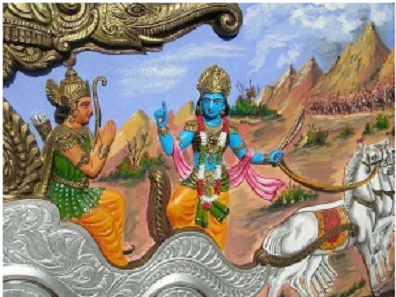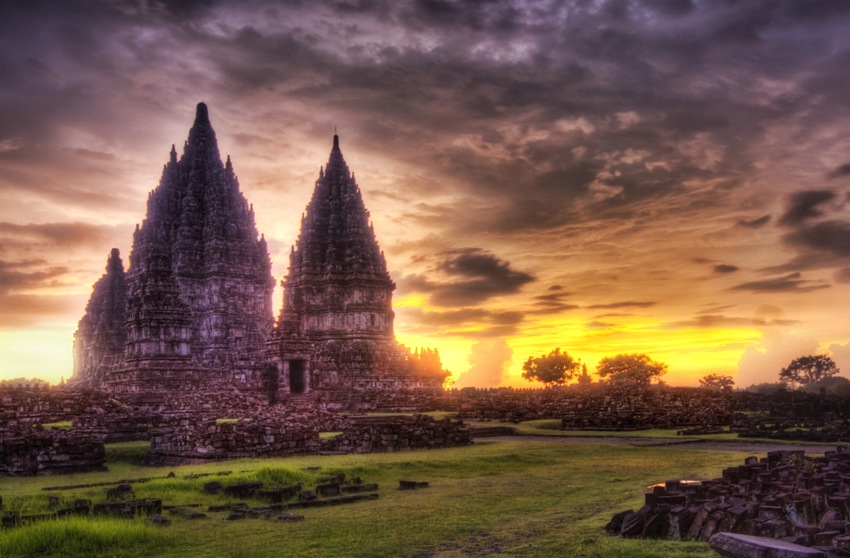Dusserah, also known as Vijayadashmi, is celebrated on the tenth day, which follows nine days of Durga Pooja, some time in September / October.
The Tenth day of the bright half of the lunar month of Aashwayuja.
This is among the most auspicious days in the Hindu calendar and comes as the finale of the nine-day festival, Navaraatri. This festival of victory is preceded by worship of Saraswati the Goddess of Learning and of Durgaa the Goddess of Strength. Grand processions of all Gods and goddesses are taken out in every town and village on this day, signifying the victory of the forces of righteousness over those of wickedness. Various have been the names of the Goddess of Strength – Durgaa, Mahaa Kaali, Mahishasura Mardini etc., under which that supreme protectress of the good and the holy put to rout, time and again, the demoniac forces and established the supremacy of the righteous.
The story of how Mahishaasura Mardini took birth is striking for its unique message. At one stage the Gods felt powerless against the onslaughts of the demoniac forces headed by Mahishaasura. In answer to their prayers for protection, they were ordered to part with a portion of their divine powers to form into a new Goddess. It was thus that Mahishaasura Mardini took on a physical form as the combined might of 33 crores of Gods. The dreaded demon Mahishaasura was slain by Chaamundeshwari after a ceaseless fight of nine days and nights.
The lesson of this legend is so beautifully clear. Even the good and the righteous can succeed against the evil forces only when they come together in an organized endeavour. Could there be a more telling message to the present-day disorganized Hindu people – many of them individually good and pious but who have remained incapable of overcoming the forces inimical to them and their culture? Truly has it been said, ‘Sanghe shaktih kalau yuge’ – Organization holds the key to strength in Kaliyuga. And this is the one single, most important lesson which the Hindu people have to learn today.
Every page of our past history bears testimony to the shocking phenomenon of how the Hindus, though immensely superior in culture, wealth, armies, territory and sheer numbers to the foreign aggressors, were defeated and enslaved. And all this tragedy because of their fatal drawback of disorganization. Now, it is high time the Hindus learnt the bitter lesson of the past and realize that “Organization is life and disorganization is death”.
The unique concept of worship of strength in the Hindu tradition is far, far removed from that of accumulation of aggressive power. This strength is termed nigrahaanugraha shakti, i.e., while on the one hand it destroys the wicked, on the other it protects the good and the holy. That is how we find that the rise of Hindu power was never attended by aggression and exploitation of other countries. Probably the only nation on the face of the earth to display this rate restraint has been the Hindu Nation. The world history is replete with the blood curdling stories of nation after nation, whenever they became powerful, embarking upon barbaric invasions of other countries and liquidating whole native races. It was given to the Hindu Nation alone to live up to the famous saying of Jesus Christ, “I have come to fulfil, and not to destroy”.
Vijaya Dashami is resplendent with many an inspiring episode reflecting the victorious culmination of deeds of valour of our illustrious ancestors. The tradition in southern parts depicts Sri Rama’s triumphant return to Ayodhya after fourteen years of banishment entailing endless hardships, dangers and mental anguish like separation from Sita and finally the slaying of Raavana, as coinciding with this day. Symbolic of the victorious occasion, Raama-Leela is observed with great enthusiasm and eclat in the northern parts.
Shree Raama, it is said, worshipped Shami tree before proceeding to Ayodhya. On the same day, the Paandavas too, took out their arms hidden in the Shami tree and revealed their identity after their one year of Ajnaatavaasa (living incognito) after twelve years of exile to a forest. That marked their preparation for the victorious war of Kurukshetra. Invoking these inspiring memories the Shami is worshipped on this day and the holy leaves are distributed by one another as an auspicious omen for the coming year. The following couplet is repeated on the occasion:
Shamee shamayate paapam shamee shatruvinaashinee|
Arjunasya dhanurdhaaree Raamasya priyadarshinee||
Arjunasya dhanurdhaaree Raamasya priyadarshinee||
(Shami, the remover of all sins, the destroyer of all enemies bore witness to Arjuna taking his bow and Shree Raama coming back to his near and dear ones.)
The Hindu kings and chieftains in the medieval period like Vijayanagar kings and Maratha Peshwas continued this tradition of worshipping the Shami tree and marching in royal procession. Many a time they would sally forth against their foes – Seemollanghana – on this day. Even to this day, amidst the heartrending ruins of Hampi in Karnataka – the site of the once worldfamed Vijayanagar stands the Vijaya Dashami pedestal on which Krishna Devaraya, the celebrated monarch, used to stand and receive the salute of his half-a-million strong army.



